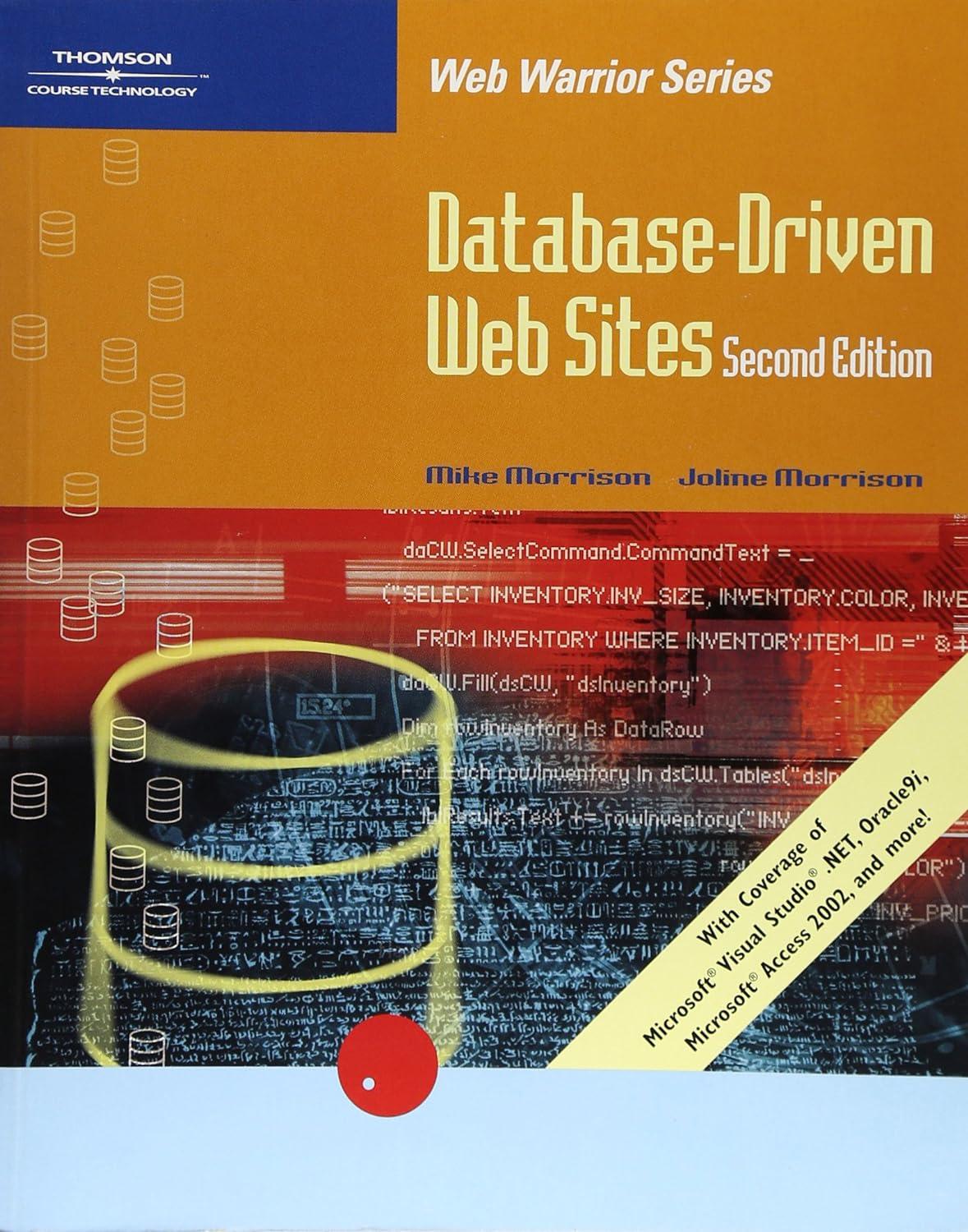Question
Abby has always dreamed of having her own ice cream shop. Now as a young entrepreneur she has decided to pursue her dream, but she
Abby has always dreamed of having her own ice cream shop. Now as a young entrepreneur she has decided to pursue her dream, but she needs some help in determining the financial viability of her plan. She has come up with a list of income and expense parameters and needs a simple program to input these parameters and calculate the monthly profit or loss as well as performing some variable cost what-if analysis.
For expenses, she has:
- Raw ingredient cost per serving
- Hourly labor rate
- Real estate monthly rental
- Utilities per month
- Monthly advertising budget
On the income side, she has:
- Selling price per serving (assume only one size for simplicity)
- Number of servings sold per month
Based on some research, she has determined that a single employee can run the shop and she plans to have the shop open eight hours per day and six days per week.
Best Practices to Follow:
- Write detailed comments and doc-strings.
- Use logical variable names with a consistent convention.
- Organize and structure your code for readability.
- Use hand calculations to verify the formulas in your code. I.e. write your own test cases to check correctness.
Create the text-based, menu interface
Write a Python script with a menu driven, text-based user interface that looks like this:
Expenses:
1. Cost per serving: 1.0
2. Labor rate per hour: 7.5
3. Shop rental per month: 800
4. Utilities per month: 150
5. Advertising budget per month: 100
Income:
6. Selling price (each): 4.0
7. Servings sold per month: 500
Analysis:
Enter Selection (0 to Exit):
In which the current parameter value is displayed but the user can select and modify each one. For Example:
Enter Selection (0 to Exit): 1
Enter cost per serving:
Use the following as the default starting values:
serving_cost = 1.00
labor_rate = 7.50
shop_rental = 800
utilities = 150
advertising = 100
servings_per_month = 1000
selling_price = 4.00
Tasks
Create the text based menu interface shown above using the default values.
The user can set the expenses from the menu
Add Profit/Loss functionality
At this point, your script should allow the user to input values for all the variables needed to calculate the profit (or loss) of Abbys Ice Cream business. To add this functionality, start by adding the menu item
8. Profit/Loss Calculation
under the Analysis section of the menu. If the user selects option 8, the script should display something like the following:
Enter Selection (0 to Exit): 8
The Ice Cream Shop will have a monthly profit/loss of 90.0 or 0.18 per serving.
In order to perform these calculations, youll have to think back to Algebra and calculate things like the total expenses and the total income on a monthly basis. Finally, in order to keep the values in monetary precision, you can use the round() function with a precision of 2.
Task
Add profit/loss calculations
Add "What if" analysis
Add the following item to your menu:
9. "What If" analysis with 10% variance
If the user selects option 9, the script should vary the expenses followed by the income from negative to positive ten percent by increments of 2. This will help Abby with some what-if calculations:
Enter Selection (0 to Exit): 9
Varying the Expenses From -10% to +10%:
Percent: -10 Expenses: 1719.0 Profit/Loss: 281.0
Percent: -8 Expenses: 1757.2 Profit/Loss: 242.8
Percent: -6 Expenses: 1795.4 Profit/Loss: 204.6
Percent: -4 Expenses: 1833.6 Profit/Loss: 166.4
Percent: -2 Expenses: 1871.8 Profit/Loss: 128.2
Percent: 0 Expenses: 1910.0 Profit/Loss: 90.0
Percent: 2 Expenses: 1948.2 Profit/Loss: 51.8
Percent: 4 Expenses: 1986.4 Profit/Loss: 13.6
Percent: 6 Expenses: 2024.6 Profit/Loss: -24.6
Percent: 8 Expenses: 2062.8 Profit/Loss: -62.8
Varying the Income From -10% to +10%:
Percent: -10 Income: 1800.0 Profit/Loss: -110.0
Percent: -8 Income: 1840.0 Profit/Loss: -70.0
Percent: -6 Income: 1880.0 Profit/Loss: -30.0
Percent: -4 Income: 1920.0 Profit/Loss: 10.0
Percent: -2 Income: 1960.0 Profit/Loss: 50.0
Percent: 0 Income: 2000.0 Profit/Loss: 90.0
Percent: 2 Income: 2040.0 Profit/Loss: 130.0
Percent: 4 Income: 2080.0 Profit/Loss: 170.0
Percent: 6 Income: 2120.0 Profit/Loss: 210.0
Percent: 8 Income: 2160.0 Profit/Loss: 250.0
In all these calculations, assume that the shop operates with a single employee six days a week, eight hours per day.
Task
Add "What if" analysis to your menu to display varying expenses and income from -10 to +10 in increments of 2.
Add functionality that will that use the current expenses and sales volume but vary the sale price until the "break-even" point is found. If the initial calculation is positive then reduce the price iteratively and if negative, increase the price iteratively (think loop). Note: Your algorithm doesn't have to find the exact break-even point, only the point where it changes from negative to positive or positive to negative. This is the price where the shop breaks even:
10. Find Break-Even
Enter Selection (0 to Exit): 10
Break-Even occurs with a selling price of: 5.7
Task
This task will be manually graded by your instructor to check that the goals and the requirements for the task have been met.
Step by Step Solution
There are 3 Steps involved in it
Step: 1

Get Instant Access to Expert-Tailored Solutions
See step-by-step solutions with expert insights and AI powered tools for academic success
Step: 2

Step: 3

Ace Your Homework with AI
Get the answers you need in no time with our AI-driven, step-by-step assistance
Get Started


